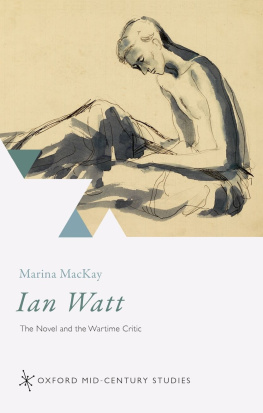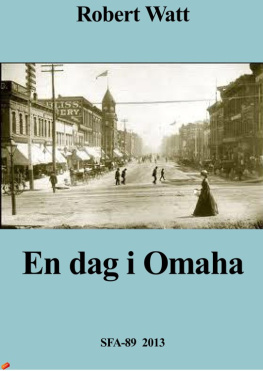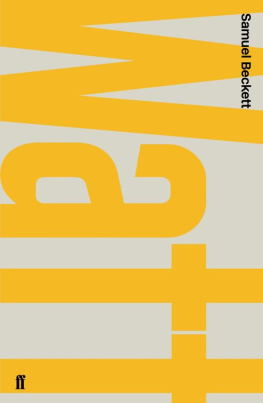C. J. Ackerley, 2005, 2010
First published by the Journal of Beckett Studies Books, 2005.
The right of C. J. Ackerley
to be identifi ed as author of this work
has been asserted in accordance with
the Copyright, Designs and Patents Act 1988.
An artist should ruthlessly destroy his manuscripts after publication lest they mislead academic mediocrities into thinking that it is possible to unravel the mysteries of genius by studying cancelled readings.
Acknowledgements
As ever, to Stan Gontarski, for his constant encouragement of my work and his generosity in offering the Journal of Beckett Studies as an outlet for it. We not only survived eight years of collaboration working on the Grove Companion to Samuel Beckett (2004), but our friendship is the stronger for it. This study has benefited from consultation with and contributions from scholars all over the world, but also from the indefinable support from many others, who have largely negated what Beckett in Proust calls that irremediable solitude to which every human being (or academic) is condemned.
In New Zealand: to my colleagues, for holding the fort as I fled the barricades, and especially to Lisa Marr, for reading my drafts and appreciating some of the more oblique asides; to Ken Laloge, for help with the logical paradigms; to George and Hilary Troup, for distracting me in Mexico; to John and Katherine Dolan, pod Moskovaya vechera; and to Wyn Jones for listening as I waxed enthusiastic about what must have seemed a pointless project.
In the USA: to the staff of the HRHRC (Austin) for their unfailing professionalism and courtesy; to Elva Griffith of the Special Collections at Ohio State University, and to the late Holly Hall of the Special Collections at Washington University, St. Louis, both of whom went out of their way to make me welcome; to Lois Overbeck and Catherine du Toit, for their friendship in Austin; to David Hayman (Wisconsin), for details of the manuscripts; to Ruby Cohn, for her support and appreciation; to Laura Lindgren (New York) for her precise proofreading; to Pat and Yolanda McCarthy (Miami) for their hospitality, and to Pat for interminable discussions on Watt and Ulysses that seemed to improve as the Jamesons sank lower. Most of all, the staff of JOBS in Tallahassee: in particular, Dustin Anderson, Jack Clifford, Amber Coady, Lauren Gibaldi, Zachary Hanson, and Paul Shields, for their hospitality and help with the editing. The final section of my Introduction, The Geology of the Imagination, reworks an article that recently appeared in the Journal of Beckett Studies.
In the UK: to the staff of the BIF, Reading, and particularly Mike Bott, Brian Ryder, and Julian Garforth for welcoming me yet again; and to Julian for inviting me to present a paper on The Geology of the Imagination at the BIF series (2004); to Dirk van Hulle, for offering to publish it; to Sean Lawlor, whom I met there for the first time; to Damian Love, for reading my drafts and allowing me to pillage his ideas and dissertation; to Matthew Feldman, for generously offering me his transcription of Becketts notes; and to Mark Nixon, for allowing me access to various obscure materials in his possession. I must express my gratitude to Edward Beckett, not only for his gracious permission for me to use unpublished manuscript materials but for his kind words, at the Sydney conference, as to my deployment of them in Demented Particulars. The Watt annotations, much more so than the Murphy ones, rely heavily on archival materials. I am grateful to the Harry Ransom Center (Austin), Ohio State University (Columbus), Washington University (St. Louis), Trinity College (Dublin), and the BIF (Reading) for permission to cite the many and varied manuscripts, type-scripts, notebooks, and bibliographical ephemera without which this study would have been impossible; and to Stan Gontarski for showing me the Beckett-Rosset correspondence.
In Tasmania: to Ralph and Joy Crane (and Callum and Rhiannon) for their hospitality; and to Ralph and the School of English, Journalism and European Languages, University of Tasmania at Hobart, for offering facilities and making me feel so welcome during the final stages of this project.
Finally, a True Story: I have dedicated these annotations to my first grandchild, Mia Rose Vachon, not simply because she came into the world on Murphys birthday (see Demented Particulars #32.7), 25 December 2004, but because her decision to do so manifested itself during a dinner party on the eve, at which a duck was served and my daughters labor pains began, beneath the groaning board. I cannot say that no trace of this dollar appeared upon her face, nor did she go up the stairs wringing the carpetrods to come down leading the infant by the hand; yet there was a feeling of relief when the guests departed, and somewhat more than three minutes later she was a mother. Like Watt (), I sometimes wonder what became of the duck.
An Art of Incompletion:
A Preface
S. E. Gontarski
On his death in 1851, J. M. W. Turner bequeathed a studio-full of his paintings to the people of Britain. Most would finally hang in the national gallery of British art, the legacy of Henry Tate now called Tate Britain, but Turners executors and various museum curators puzzled over which of those stored paintings to exhibit, that is, which were completed enough to hang and which were not. Many were never exhibited during Turners lifetime and had less the look of a painted image than its afterimage or the ghost of a painting. The more closely the paintings were examined, the more difficult it was to distinguish those finished from those abandoned or rejected in some state short of completion. Some, like Norham Castle, Sunrise (1845), were clearly signed, but to the curators they still possessed that ghostly, hazy, unfinished quality that marks much of Turners late work. Many were, moreover, if not monochromatic, at least used color sparingly, producing studies in grays and blacks like Disaster at Sea (1835). That is, as Turner developed, his work grew less and less detailed, distinctions among objects grew less clearly defined, the works less conventionally colored, and so the whole gave the appearance of incompletion. The process might even be described as a vaguening, the scene somehow ill seen if not ill stated. Even Goring Mill and Church (1806-7) (or Cleave Mill as it is called on the attached plaque) retains raw, exposed canvas. Recently Tate Britain folded the issue into its Turner exhibit with a feature called Finished or Unfinished? As the exhibit points out, the question is complicated by the fact that Turner often exhibited work in various states of completion, regularly submitting apparently unfinished work to Royal Academy exhibitions, at least for the opening days, completing (which often meant simply signing) the paintings just before full public viewings. For many contemporary critics Turner thus anticipated at least Impressionism, if not the rebellious spirit of Modernism itself as he moved the subversion of expectations and particularly issues of completion to center stage. To twenty-first century eyes the indistinctions of Turners late style, however, make him our contemporary.











